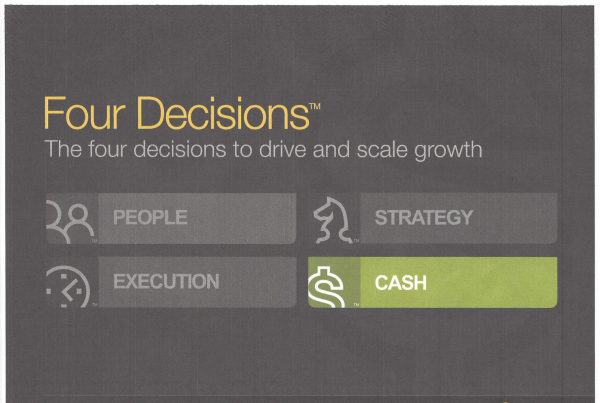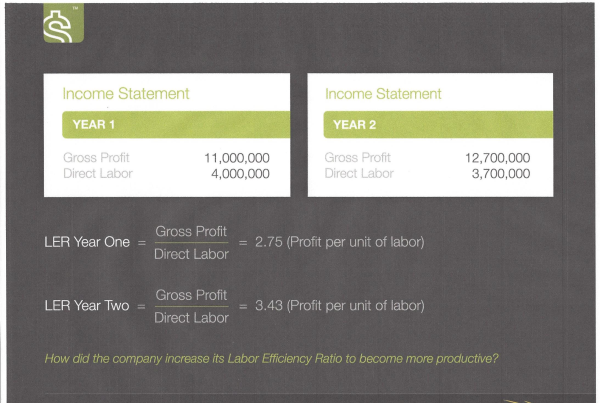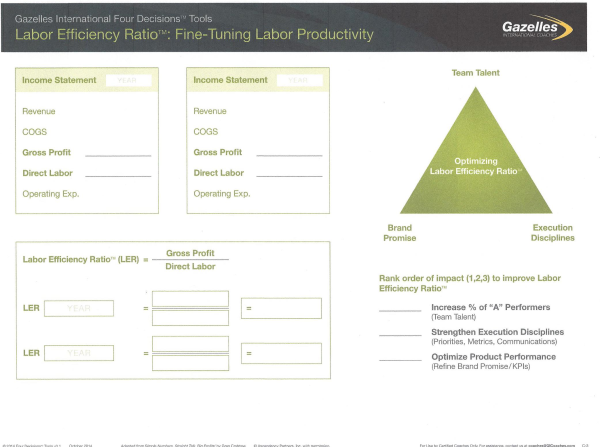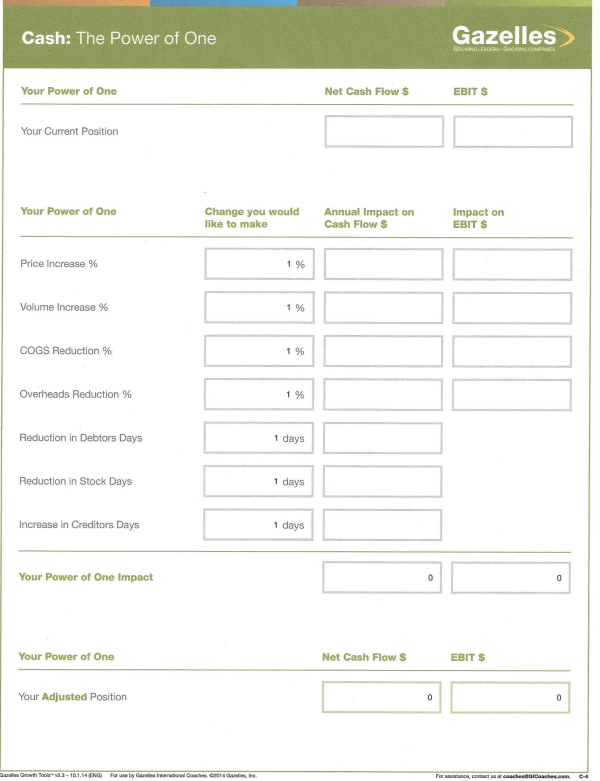In life and in business your decisions equal success. I’m reading an excellent book by Richard Flint, Behavior Never Lies. It reinforces much of our Gazelles and Rockefeller Habits resources and coaching. On the need for clarity, and how important that the essence of any person is not what they say, but rather what they do. In your business do your actions, your decisions contradict what you say? If so you will have a trust problem with your people. I’ll explore the book further in a future blog.
-resized-600.jpg?width=306&height=205&name=cash_-__four_decisions_(ip)-resized-600.jpg) The need to align your business with your decisions is critical. The four decisions Rockefeller Habits identify is crucial to your business are People, Strategy, Execution and Cash we’ve previously explored People, Strategy and Execution. Get these right or miss out on growing your business, and risk leaving significant revenues, profits, and time on the table.
The need to align your business with your decisions is critical. The four decisions Rockefeller Habits identify is crucial to your business are People, Strategy, Execution and Cash we’ve previously explored People, Strategy and Execution. Get these right or miss out on growing your business, and risk leaving significant revenues, profits, and time on the table.
We continue with Cash Growth Tools and two tools that can reveal and help you better manage and grow your business.
Labor Efficiency Ratio: What is a good metric to measure, monitor and optimize Labor Productivity? It is the Labor Efficiency Ratio (LER), as defined by Gazelles Faculty Member and Thought Leader Greg Crabtree. Greg is author of the powerful book “Simple Numbers, Straight Talk, Big Profits!”
For years Greg has pursued his passion to help growth companies and their entrepreneurs identify a handful of simple metrics to help drive and monitor profitable growth. Greg defines the LER as Gross Profit divided by Direct Labor (expense). This will become an important number for your business in order to keep Labor Productivity as high as possible.
What does the Labor Efficiency Ratio (LER) do for growth companies? It measures the productivity of your labor force through time (trends, changes) and can be used to tune (optimize) your economic engine for maximum profitability. Also, you can focus the LER on sub-categories of labor within your company – the most common being Management Labor and Sales Labor.
Once you have calculated and begun to see the trends in your LER, how can you optimize it? There are many ways to do so, but we have identified 3 that are prominent.
Let’s illustrate the LER with an example. -resized-600.jpg?width=306&height=205&name=cash_-_ler_example_(ip)-resized-600.jpg) Review the numbers in the picture here on the right.
Review the numbers in the picture here on the right.
In order to calculate your LER, you will want to refer to your company’s most recent 2 years’ financial statements, specifically your Income Statement(s). In this example, from the Income Statement in Year 1, we see a LER of 2.75 (profit per unit of labor) and in Year 2 we see a LER of 3.43 (profit per unit of labor).
How did the company increase its Labor Efficiency Ratio? It clearly has increased its productivity in some manner to have a much stronger year-over-year “profit per unit of labor.
-resized-600.jpg?width=354&height=263&name=cash_-_labor_efficiency_ratio_(ip)-resized-600.jpg) Using the Rockefeller Habits – Four Decisions framework, we have identified 3 primary means to increase LER, they are:
Using the Rockefeller Habits – Four Decisions framework, we have identified 3 primary means to increase LER, they are:
1) Increase the level of your Team Talent, that is: Intentionally improve your team profile to an increasing number of A-Players – top performers who live your core values and get things done well!
2) Strengthen your Execution Disciplines of setting Priorities, using Key Performance Indicators (KPIs) to measure progress, and Communication Rhythms – a combination of energetic, productive meetings to get things done and stay highly aligned as a team.
3) Review, strengthen and measure your Brand Promise, beginning with a very clear definition of your Core Customer – the customer most likely to purchase your product or services at your price on a consistent, ongoing basis.
For some of you who are using the Rockefeller Habits – Four Decisions framework, these 3 terms are familiar…for those of you who are just learning them, it’s okay if you “learn as we go!” They are actually very simple and intuitive.
For more detailed information on LER and a video sharing it's value visit Your Organization’s Most Important Resource.
Cash Flow Story: Every company’s cash flow tells an important story about the health and the near term future of the business. We have found through experience that building the skill to “read” your cash flow story is an important one to master.
Do you know what your cash flow story is?
Is your story telling a story of:
- Positive?
- Sufficiency?
- Abundance?
- Perilous?
Have you ever read a great book that was a balance between intriguing (keeping your keen interest) and intellectually challenging (a bit hard to figure out)?
The story unfolds as you read, yet you had to exert energy to understand all of the characters, their motivations, and the various layers of the plot? Such are the components of a great mystery novel: You must put together puzzle pieces to see the entire picture and enjoy it.
Your cash flow also tells a story and we must study it to fully understand the story it tells.
Every company has a Cash Flow Story. Do you know:
1) What story your cash flow is telling?
2) How the story unfolds each (new) month?
3) Would you know if the story was warning you?
The Power of One (1%) is a principle that can have significant positive (or adverse) impact on your Cash Flow Story.
Alan Miltz, one of our Gazelles Faculty Members and Contributing Thought Leaders, (along with his colleagues) has identified 7 key financial variables that companies can directly influence AND that strongly impact cash flow. At Positioning Systems we’ve used this tool to help our Rockefeller Habits customers discover important changes to these financial varialbes making significant impacts to their business.
Two important questions arise:
1) How would your cash flow improve if you increased any or each of these by 1% over a period of time?
2) Of these 7 key financial variables, which ones most influence your company’s cash flow?
What are these key financial variables and how can you influence them and most importantly, what impact can they have on your cash flow?
Here are the 7 most influential and impactful financial variables related to the Power of One (1%).-resized-600.jpg?width=294&height=382&name=cash_-_the_power_of_one_cash_flow_story_(ip)-resized-600.jpg)
- Price,
- Volume,
- Cost of Goods Sold,
- Accounts Receivable,
- Accounts Payable,
- Inventory (Turns),
- Overhead Expense.
Begin by documenting (or estimating if you do not have your current nor last year’s financial statements with you) your Net Cash Flow and EBIT (Earnings Before Interest and Taxes) for the past rolling 12 months or previous fiscal reporting year.
Next, collaborate as a team and discuss the impact of a 1% increase in the 7 key areas that drive your Power of One.
Finally, as a team, estimate the positive impact on your Net Cash Flow and EBIT over the coming 12 months (or over the new fiscal year). What could these improvements do for your business if you took action on the Power of One (1%)?
In the past 90 days one of our customers increased their gross profit margin by 2 ½ points resulting in $40,000 more gross profit. A small improvement can make a significant difference in your business. That’s why this tool is so powerful.
For help with your cash flow and cash planning contact Positioning Systems to help you get the Power of One working for you.
John Warrillow new book The Automatic Customer identifies one way to build your business cash flow and value as subscriptions. Costco identified this as a key factor to ensuring profitability. We’ll explore this in Fundability Optimization and Increasing Equity next blog.






.jpeg?width=150&height=135&name=Hand%20with%20marker%20writing%20the%20question%20Whats%20Next_%20(1).jpeg)

